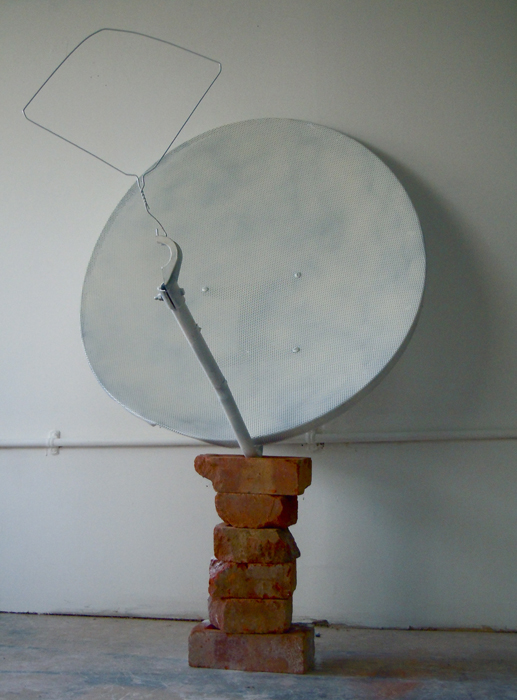Tattooed Darkness: The Art of Richie Culver

When London-based artist Richie Culver was 13, a TV show about the Tate Modern disturbed his… private time. “I just remember being at home on a Friday night, lying in bed and flicking through the television trying to find some cleavage. Then I turned to Channel 4 and hear now, we go to The Tate Modern. It was depressing.” As irony would have it, it was the Tate that gave Culver his big break last summer when they included his first work in a group show. Titled Jesse Owens, the work features an image of the athlete, which Culver cut out of a vintage newspaper, collaged with the words, “Have you ever really loved anyone?” The work attracted the attention of the London art world and since, the tatted-up 30-year-old artist’s intensely personal collages and installations have been exhibited in shows in London, Munich, and Oslo.
Tonight marks the opening of the artist’s second solo show, “Too Dark One Light.” The exhibition will be the first shown in the new gallery space, Late Night Chameleon Café, a high concept by- appointment-only store opened in East London last year. In his new installations, newspaper collages and photo collages created using family portraits, some of which date back to the 1930s, Culver continues to explore his dark past as well as the themes of communication, loss and struggle. Perhaps most poignant is the piece, “I Loved You, You Just Couldn’t See It,” which grew out of his failed attempt to win back an ex-girlfriend by spray-painting those words on her new home. “I love that piece. It’s total purity and absolute black horror,” says the artist’s staunch supporter and mentor, former Pulp guitarist and current front man of The Hours, Ant Genn. “Richie’s art is a brutally honest expression of who he is. I think a lot of his stuff has great narrative and if you look into it, you can see the story. I know what [his work] means to me because it represents stuff that’s happened in my life and that’s where I think great art connects with people.”
Culver says that his earlier collaged works were essentially suicide notes. Some pieces in the new show, like Quiet as You Go Up the Stairs, My Dad’s Got a Bad Back [pictured, right], which relates to his experiences growing up in a working-class home in Northern England, and a sound-centric wishing well installation that references the isolation Culver has felt since giving up drinking, are perhaps less anguished than his previous works. But the darkness is still there. “If it works, it works,” explains Culver. “At the moment, my head is in quite a dark place, as it is most of the time, so I’m just going to work within it. Maybe if I become really rich and famous and do really well, I’ll make pictures of flowers or butterflies. But at the moment, it’s gonna stay where it is.”
Next up for the artist is a show at London’s Soho House, where his works will be on display alongside those of Tracey Emin, Jeff Koons and Damien Hirst. He also hopes to secure a show in New York in the near future. And while it seems that the aforementioned angst will be present in Culver’s work for the long haul, he assures that his art isn’t only about pain. “There’s hope in my work as well. I have the ability to either make somebody laugh or cry. And that suits me fine. Because I’ve got some humor in me.”
“TOO DARK ONE LIGHT” CAN BE VIEWED BY APPOINTMENT AT LN-CC, 18 SHACKLEWELL LANE, LONDON, E8 2EZ, FROM JUNE 16 THROUGH JULY 7.






